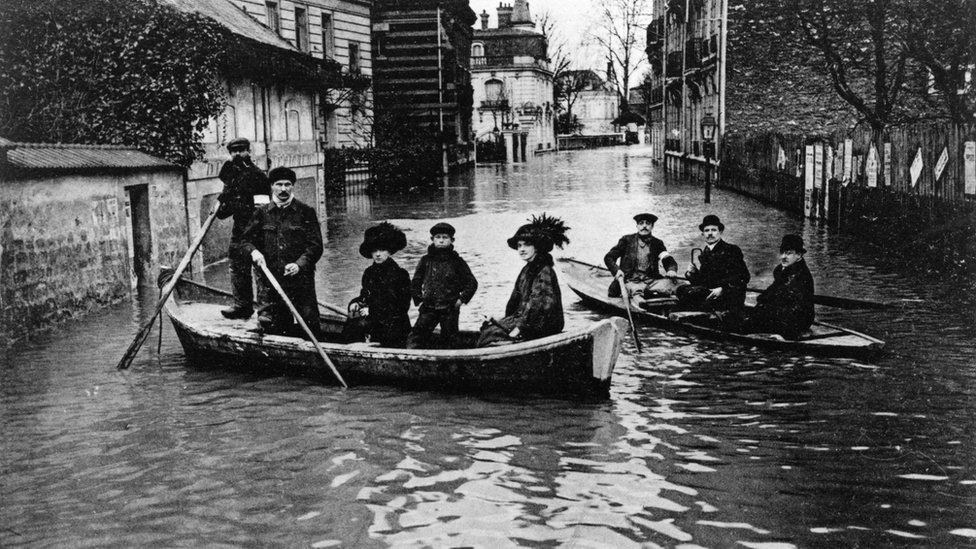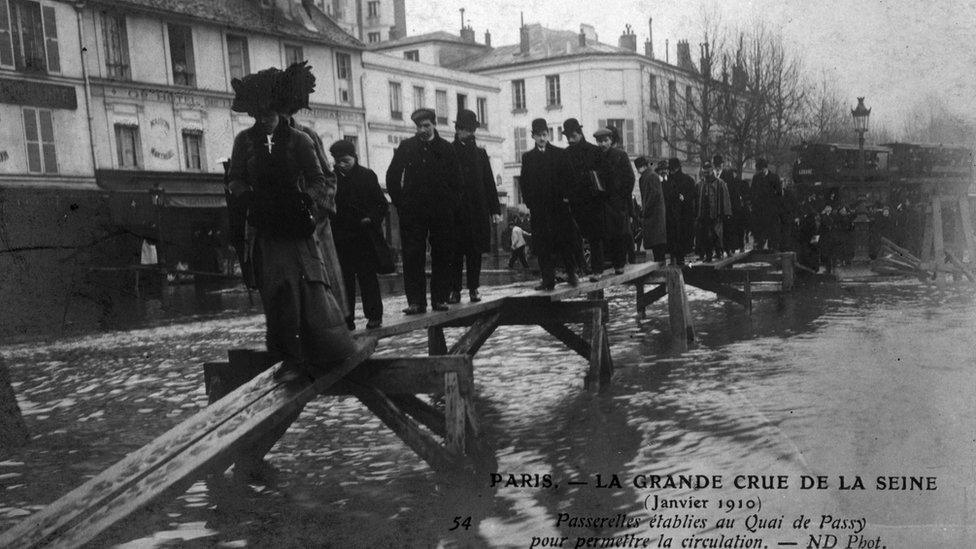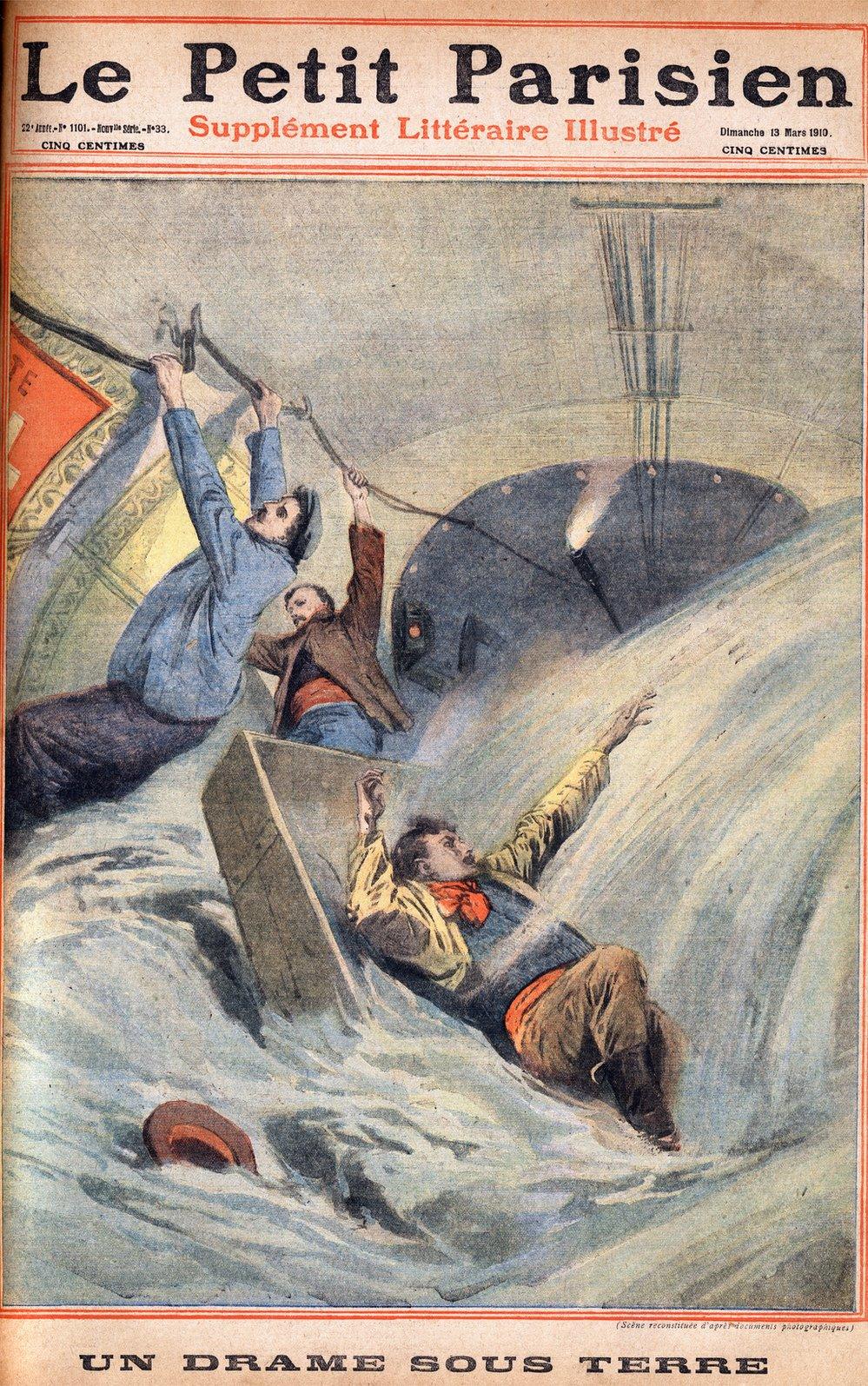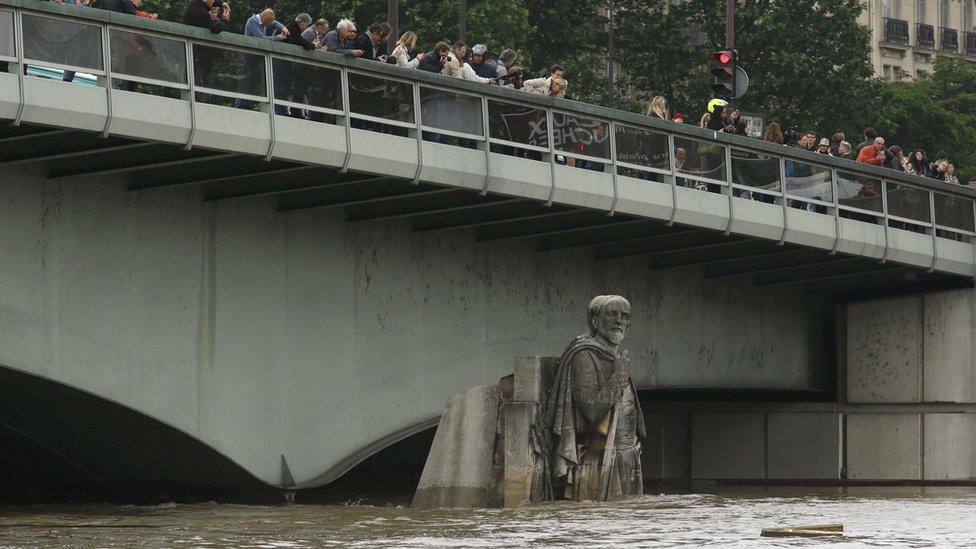When Paris was under water for two months
- Published

It was the flood of the century. The 20th Century, that is.
The 1910 floods in Paris lasted for two months and took the lives of five people.
After a rainy summer and autumn in 1909, the water levels rose and rose and rose.
Soon the city looked more like Venice than Paris.
People steered boats down the Rue de Maine (below) and the Cour de Rome near the Saint-Lazare train station (above photograph).

The city became unfamiliar and dangerous. Between January 21 and January 28 that year, thousands of people evacuated.
Government engineers built wooden walkways that people could use to get through the flooded streets once the train tracks were submerged.
The electricity failed and even judges needed to bring blankets to court in the cold winter weather.

These were the days when most people did not have cameras.
Some images were made into postcards and sold as souvenirs of "la grande crue" - the great flood.
It was a long time before life got back to normal in the French capital.

In March, the city was still flooded. An illustrated Sunday supplement of the then-prominent French newspaper Le Petit Parisien featured a drawing of men crashing dramatically through an underground train tunnel on waves of the flood, with the headline "drama under the earth".
On 15 March, the Seine returned to its normal levels, and the Paris Metro re-opened in April.
More than 14,000 buildings had been flooded, including the seat of the National Assembly, the Palais Bourbon.
Traditional yardstick
The gauge Parisians use to check the height of the river is a statue of a soldier at the Alma bridge called the Zouave - the name comes from fighting forces originally drawn from French North Africa and which distinguished themselves in the 1854 Battle of the Alma in the Crimean War.
When water reaches the soldier's feet, the river is closed.

In 1910, it got as far as his shoulders.
The river level in 1910 reached 8.62m higher than normal. That is the highest the Seine has ever been.
Now, 106 years on, Parisians are using the Zouave statue as a measuring stick again. The water is on course to rise up to 6.5m above its normal level.
